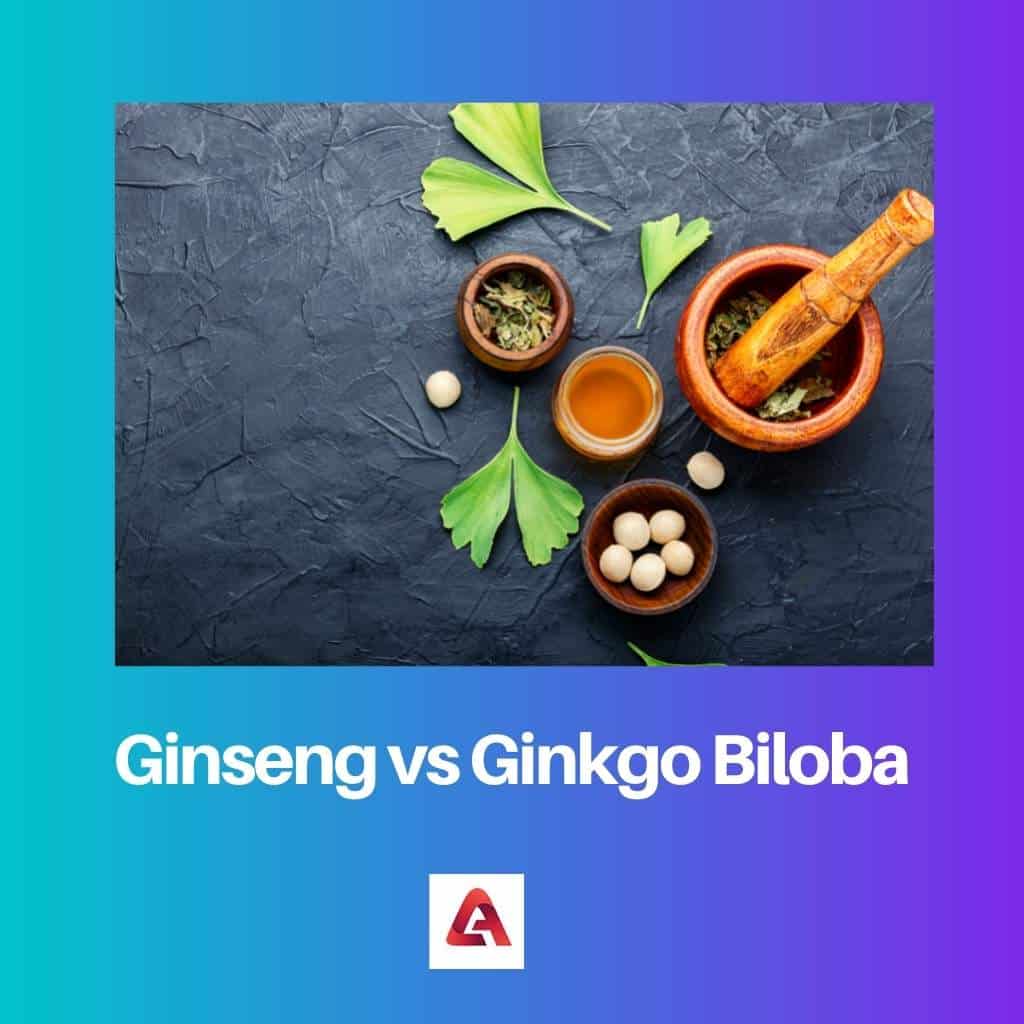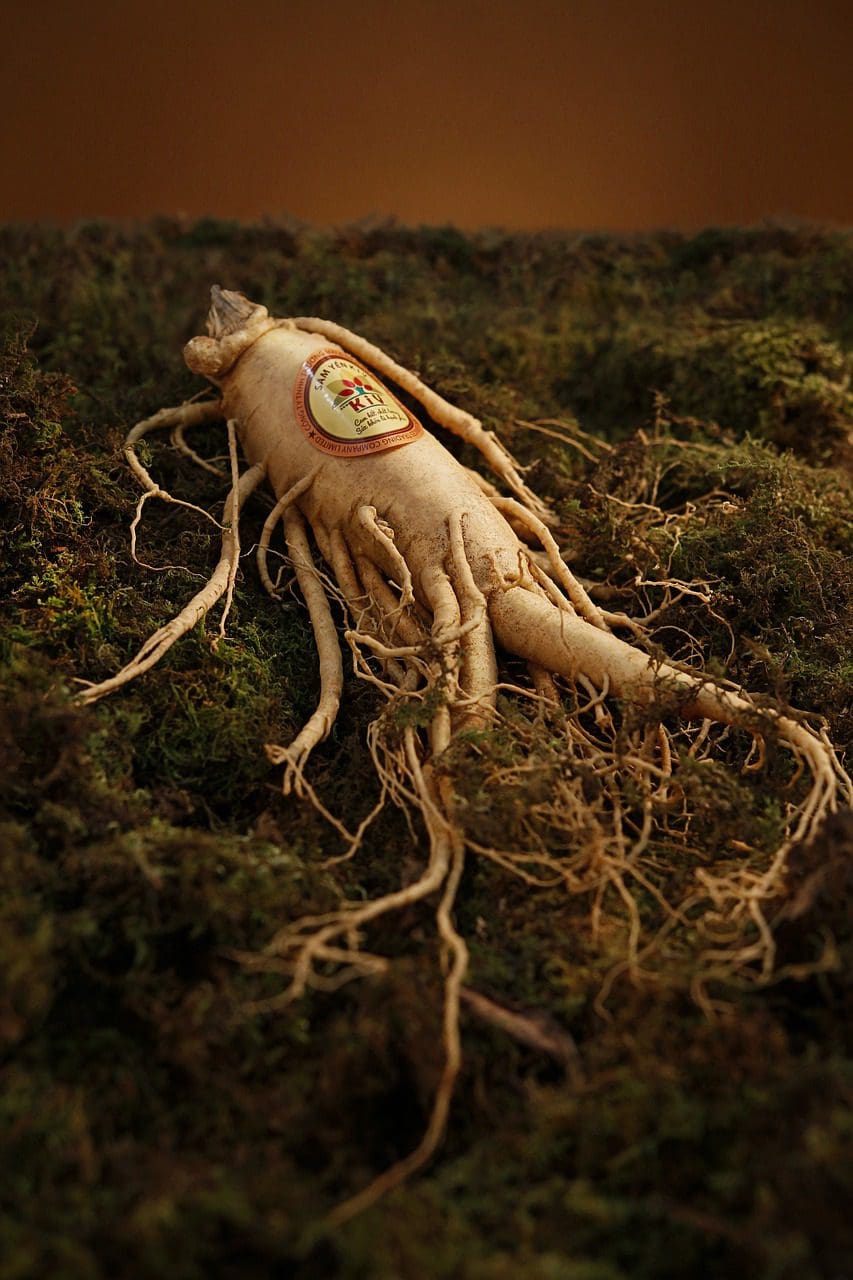In the world of medicinal autotrophs, ginseng and ginkgo are quite famous. These medicinal plants have been flowing into man’s civilization throughout its evolution. Not only are these rich in medicinal effects, but they also act as an important source of anti-aging drugs (not completely, though).
Ginseng and ginkgo extracts are commonly used in many drugs. So many years passed throughout mankind, yet these plants continue to serve their irreplaceable purposes in both homoeopathy and allopathy.
Ginseng and Ginkgo Biloba are both rich in antioxidants and anti-inflammatory agents, but there are many vital differences between them.
Key Takeaways
- Ginseng is a root used in traditional Chinese medicine to boost energy and improve cognitive function.
- Ginkgo Biloba is a tree that is also used to improve cognitive function and has been shown to improve circulation.
- Ginseng is used more commonly in Eastern medicine, while Ginkgo Biloba is used more in Western medicine.
Ginseng vs Ginkgo Biloba
Ginseng is a root that has been used in traditional Chinese medicine for thousands of years. It is believed to have several health benefits, including reducing stress and increasing energy levels. Ginkgo Biloba is a tree native to China that has been used for its potential health benefits for centuries. It is believed to have a few effects on the body.

Belonging to the Panax genus under the Araliaceae family, ginseng is a slow-growing perennial plant with tons to offer. Extracted from the roots of the Panax genus plants, these cure blood sugar, reduce stress and strains, boost energy levels, and sometimes are used to cure sexual hormone secretions in males. It is mainly found in Korea, Bhutan, and eastern Siberia.
Ginseng roots are offered in dried form as a traditional medicine that is considered to have aphrodisiac, stimulant, and anti-diabetes properties, as well as a therapy for male sexual dysfunction.
Ginkgo Biloba, on the other hand, is extracted from the leaves and seeds of the maidenhair plant. They are 25-30 meters tall and are mainly found in Asian provinces, especially in China.
Interesting facts about ginkgo Biloba includes the fact that it is still not classified under any predefined phyla of plants. The ginkgo’s connection to other plant groupings is yet unknown.
It’s been categorized together under the Spermatophyta and Pinophyta divisions, but no connections have been established yet.
Comparison Table
What is Ginseng?
Ginseng is a medicinal extract from the roots of Panax ginseng which has been used by humans for its extraordinary medicinal value. The genus name “Panax” is derived from a Greek word that means ‘all heal’.
Ginseng has enormous medicinal perks like it is an excellent antioxidant and can act as a blood pressure-reducing agent too! Ginseng contains chemicals called ginsenosides.
Ginseng comes in a variety of forms and species, including Panax ginseng (Asian ginseng) and Panax quinquefolius (American ginseng). Other plants, such as Siberian ginseng (Eleutherococcus senticosus) and crown prince ginseng, are sometimes confused for ginseng root (Pseudostellaria heterophylla).
When we refer to ginseng, we have two primary species of ginseng based on cultivation and growth. They are listed below, along with their features;
- Wild Ginseng: Mountain ginseng, also known as wild ginseng, grows organically in the mountains and is hand-picked by simian gatherers. The wild ginseng plant is now nearly extinct in China and critically endangered across the world. This is owing to increased demand for the commodity in recent years, which has resulted in wild plants being harvested quicker than they can grow and reproduce. Wild ginseng can later be turned into red and white ginseng.
- Cultivated Ginseng: When compared to the rarely accessible wild ginseng, cultivated ginseng is less costly. Humans put cultivated ginseng on mountains and allow it to grow like wild ginseng using artificial environments and niche inhibitors.

What is Ginkgo Biloba?
Ginkgo biloba is a plant that is used to treat altitude sickness, cerebrovascular disease insufficiency, dementia, lightheadedness, campylobacter, macular degeneration/glaucoma, memory lapses, pregnancy complications, SSRI-induced erectile dysfunction, and as a bronchodilator.
It is extracted from the leaves and seeds of the infamous tree named Maidenhair. It’s said in many legends that this plant can practically heal any disease (which is partially true). Average maidenhair grows up to 30 meters tall, and the seeds are sarcotesta (leathery outer layer) with pale pink, delicate, and fruit-like structures.
Ginkgo leaves are fan-shaped and imitate the leaflets of the ‘maidenhair fern’. They develop on short, spurlike, yet robust stems. The velvety leaves may grow to be up to 8 cm long and twice as wide.
Ginkgo biloba aids in improving blood circulation and enriches the functioning of brain cells. Ginkgo biloba has long been utilized in Chinese medicine.
Ginkgo extract became popular in many nations around the end of the twentieth century for its supposed recollection qualities, and the chemical compositions of the plant are being studied as a possible therapy for Alzheimer’s disease.

Main Differences Between Ginseng and Ginkgo Biloba
- Ginseng is extracted from the roots of the plant, whereas ginkgo is extracted from the leaves and seeds.
- Ginseng has no fatal or life-risking side effects, but ginkgo can be dangerous if not prescribed by a professional medical officer.
- Ginseng has its origin rooted in Korea and other North Asian countries, whereas ginkgo has Chinese origins.
- Ginseng consists of ginsenosides, gintonin, and pannexins, but ginkgo has flavonoids and terpenoids in it.
- Ginseng stimulates the synthesis of adrenocorticotropic hormone (ACTH) but ginkgo Biloba simply aids in the improvement of brain function.

Ginseng and Ginkgo Biloba are two very important herbs that have been used in traditional medicine as well as in modern medicine. It’s amazing how they have been serving mankind for centuries.
Yes. Their medicinal properties are unparalleled and they continue to be an important part of modern medicine.
Absolutely, the rich history of these herbs and the valuable health benefits they provide make them highly significant in medicine.
The detailed information about Ginseng and Ginkgo Biloba is thoroughly informative. It provides a comprehensive understanding of their historical and medicinal significance.
Indeed, the article presents an in-depth analysis of the medicinal properties and uses of these herbs.
Absolutely, the comparison and details about Ginseng and Ginkgo Biloba are highly educational.
The comparison of the scientific details and medicinal uses of Ginseng and Ginkgo Biloba is highly informative. It provides a comprehensive understanding of their benefits.
Absolutely, the article presents a detailed analysis of the medicinal properties and effects of these herbs.
I agree. The scientific insights provided in the article offer valuable knowledge about Ginseng and Ginkgo Biloba.
The details about the roots and extracts of Ginseng and Ginkgo Biloba provide valuable insights into their medicinal applications. It’s incredible to learn about their wide range of benefits.
Absolutely, the broad spectrum of health benefits offered by Ginseng and Ginkgo Biloba is truly remarkable.
Yes, the diverse medicinal uses of these herbs make them highly valuable in different medical treatments.
The information about the unique constituents and medicinal properties of Ginseng and Ginkgo Biloba is quite intriguing. It highlights their importance in traditional and modern medicine.
Absolutely, the specific chemicals and compounds found in these herbs have significant health benefits.
The comparison table provides a great insight into the differences and similarities between Ginseng and Ginkgo Biloba. It’s fascinating to learn about how they are extracted and their respective medicinal properties.
Indeed. The scientific details provided in the article give a clear understanding of the herbs and their uses.
The information about the different types of Ginseng and their cultivation is quite enlightening. It’s incredible to learn about the natural origins of these herbs.
Yes, the distinction between wild and cultivated Ginseng is important in understanding their availability and usage.
The medicinal benefits of Ginseng and Ginkgo Biloba are extensive. They continue to play a vital role in providing natural remedies for various health conditions.
Absolutely, the natural properties of these herbs make them highly valuable for medicinal and therapeutic purposes.
The details about the extraction and medicinal properties of Ginseng and Ginkgo Biloba are fascinating. They are truly remarkable herbs with a long history of medicinal use.
I completely agree. The medicinal significance of these herbs is unparalleled.
Absolutely, the unique properties of Ginseng and Ginkgo Biloba make them essential ingredients in modern medicine.
The information about the two primary species of Ginseng is very interesting. The differences between wild and cultivated Ginseng are quite significant.